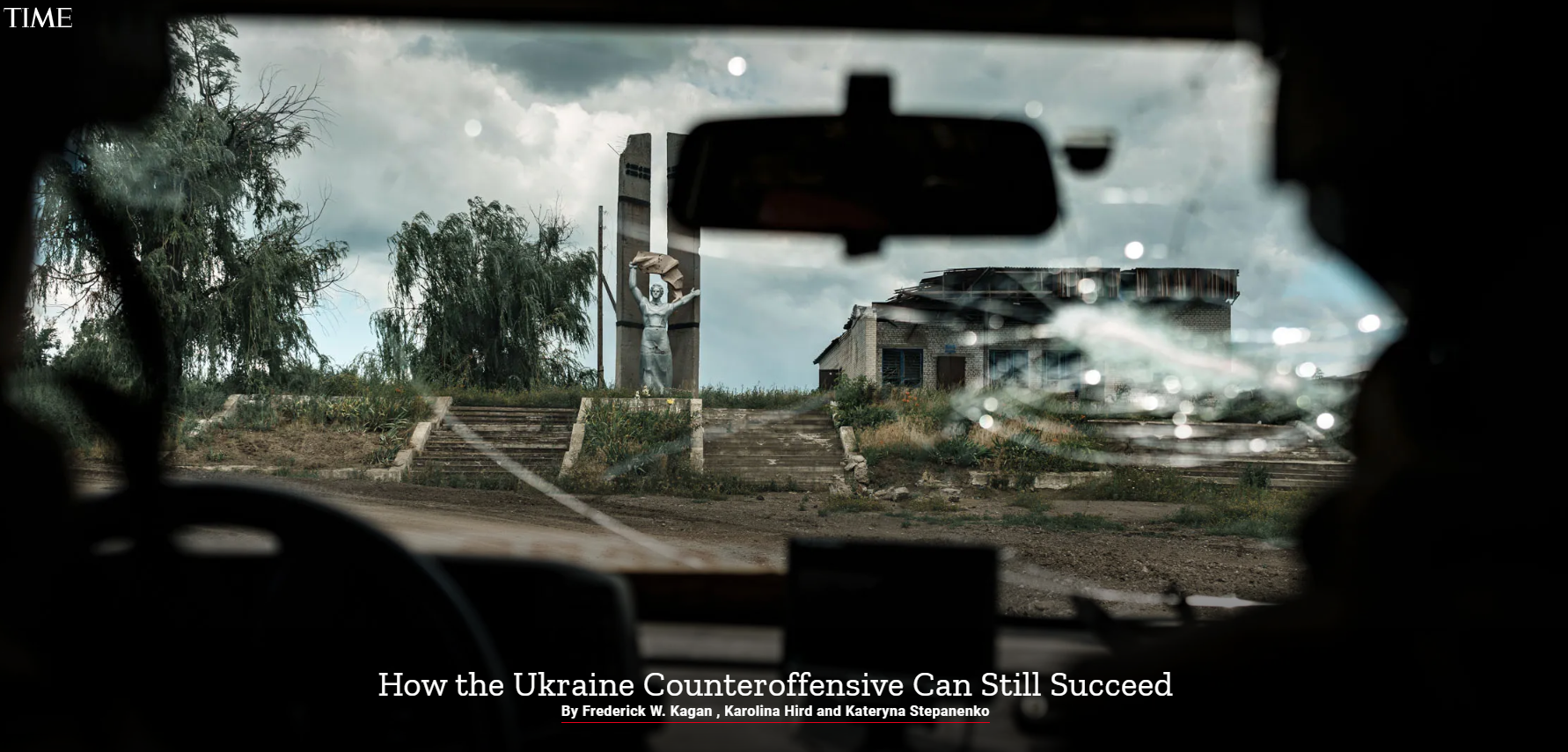 |
 |
How the Ukraine Counteroffensive Can Still Succeed
How the Ukraine Counteroffensive Can Still Succeed
August 3, 2023 - TIME
By Frederick W. Kagan, Karolina Hird, and Kateryna Stepanenko
"Ukraine is still very much in the game. The many structural advantages it has offer good reason to expect that Ukrainian forces will liberate vital lands and the people living on them, if only the West holds firm in its support."
The situation in Ukraine still favors Kyiv despite the limited progress made in the counteroffensive so far. Ukrainian forces attempted a limited mechanized penetration of prepared Russian defenses in the south in early to mid-June, but failed to break through the Russian lines. They then switched to slower and more careful operations while disrupting Russian rear areas with long-range precision strikes. Ukraine began the next, reportedly main, phase of its counteroffensive on July 26 with a determined drive to penetrate Russian lines in western Zaporizhia Oblast. It’s far too soon to evaluate the outcome of that effort, which is underway as of the time of this writing, but it is vital to manage expectations. Ukrainian forces are fighting now to break through the first line of long-prepared Russian defenses. Several lines lie behind it, stretching for many miles. Ukrainian progress will very likely alternate periods of notable tactical advances with periods, possibly long periods, of pause and some setbacks. Much as we might hope that the road to the Sea of Azov will simply open for Ukrainian forces the odds are high that fighting will remain hard, casualties high, and frustration will be a constant companion. All of which is normal in war.
But the Ukrainian counteroffensive can succeed in any of several ways. First, the current Ukrainian mechanized breakthrough could succeed, and the Ukrainians could exploit it deeply enough to unhinge part or all of the Russian lines. Second, Russian forces, already suffering serious morale and other systemic problems, could break under the pressure and begin to withdraw in a controlled or uncontrolled fashion. Third, a steady pressure and interdiction campaign supported by major efforts such as the one now underway can generate gaps in the Russian lines that Ukrainian forces can exploit at first locally, but then for deeper penetrations. The first and second possibilities are relatively unlikely but possible.
The third is the most probable path to Ukrainian success. It will be slower and more gradual than the other two—and slower than Ukraine’s Western backers desire and expect. It depends on the West providing Ukraine with a constant flow of equipment likely over many months so that Ukraine can maintain its pressure until the Russian forces offer the kinds of frontline cracks the Ukrainians can exploit. It is not primarily a matter of attrition. The slow pace of the pressure campaign Ukraine had been using before July 26 is designed to minimize Ukrainian losses. It is not primarily oriented towards attriting Russians either, but rather towards steadily forcing the Russians out of their prepared defensive positions in ways that the Ukrainians can take advantage of to make operationally significant advances. It is still maneuver warfare rather than attritional warfare, just at a slower pace. It therefore requires patience, but it can succeed.
